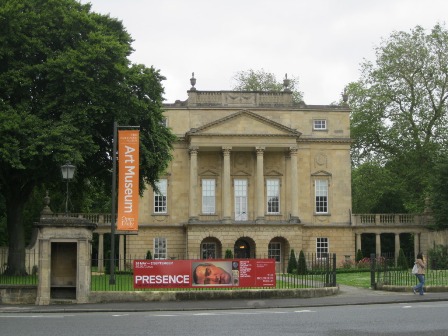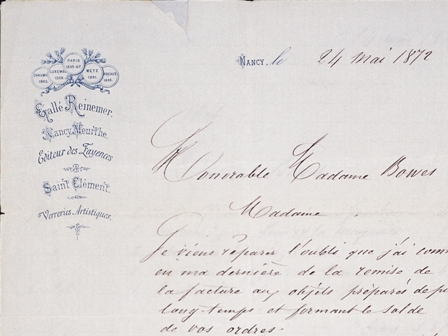
It seems appropriate for a holiday period to talk about a place I have just visited while on holiday: the lovely and recently expanded Holburne Museum in Bath. There are many reasons to enjoy the museum, but I was particularly interested after having recently heard their Director talk about the role archive documents had played in creating one of the new displays.
The core of the Holburne Museum’s collection was amassed by the private collector Sir Thomas Holburne (1793-1874). He kept this extraordinary mixture of furniture, ornaments, paintings, porcelain and much more in a Bath townhouse where he lived with his sisters. It must have been a bewilderingly rich and crowded experience to visit the Holburnes, given the size of their collections relative to the size of even a gracious townhouse! One area of the redisplay recreates just a small part of this richness, inspired by a detailed inventory of the town house. The inventory is also available in audio for museum visitors, who can listen in growing amazement, as I did, to the list of tables, chairs, knick-knacks, sideboards, fire-irons, netsuke, figurines and more which occupied just one room in the Holburnes’ house.
But, as the museum website states, there is frustratingly little other information available about how and why Holburne set about creating this extraordinary collection. Few records survive. Having seen what the museum curators have achieved based on a single surviving document, it would have been fascinating to see what they could have done with more.

Letter from Emile Galle to Josephine Bowes (1872)
We may soon have that opportunity with another museum, though: the Bowes Museum, Barnard Castle. As part of the National Cataloguing Grants Programme, they are receiving funding to catalogue the archive which documents how John and Josephine Bowes went about creating a world-class museum for the North East of England. Unlocking the archive will tell many stories about taste and patronage, about commissioning artists like Emile Galle (a fragment of one of his letters to Josephine is illustrated here), and about the couple’s ambitions for their collection. It should be a huge source of inspiration for the museum’s curators in future years.


It is cheering to see the Holburne Museum appreciated, it is a very fine collection in a beautiful and sensitively refurbished building. Over several excursions from London to Bath in the last year I have enjoyed viewing the Somerset Maugham collection of theatrical paintings in the Holburne. Last year the National Theatre, where I am the archivist, gifted to the Holburne the Maugham collection which we had owned since 1948, it had been gifted to the Trustees of the National Theatre by Maugham – to decorate eventually the new theatre when the building should be finally realised. The collection includes important works by Zoffany, Francis Hayman and Samuel de Wilde. Prior to our gift of the collection to the Holburne it had been closed from public view for many years as the National’s brutalist concrete walls and wide open foyers were never a suitable home for 18th century oil paintings.
The paintings went to Bath but we decided to hold on to the manuscripts of Maugham’s plays and to his correspondence with the Trustees of the National Theatre on the collection from the 1940s and 50s in which he discusses his collection. In his essay for the catalogue of the collection Maugham recounts his first purchase:
‘One day Hugh Lane dropped in to see me and told me that he had seen in a shop in Pimlico a theatrical picture by De Wilde which he thought uncommonly good. ‘They’re only asking forty-five pounds for it, ‘ he said, ‘you’re a dramatist, you ought buy it.’
So starts a great collection. While the greater Holburne collection may lack provenance or a documented collecting rationale the Maugham Collection now held in the Holburne has benefited from the excellent catalogues produced by Raymond Mander and Joe Mitchenon first in 1955 and later revised in 1980 and at the NT Archive a fascinating archival record of its precarious fortunes – Maugham’s home, the Villa Mauresque in the south of France, where the collection was housed was occupied by both the Germans and the Italians, but the collection survived unharmed.
We plan to complete the cataloguing of the Maugham papers at the NT Archive in 2013 and hope they will provide further insight into the collection.
Thanks Gavin Connections between collectors, collections and museums are often quite complex and fascinating subjects. We look forward to the catalogue and to seeing how people use it!